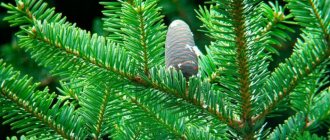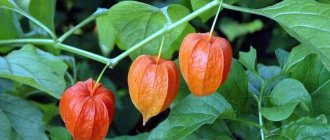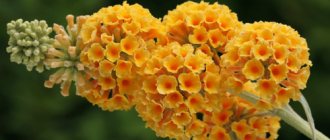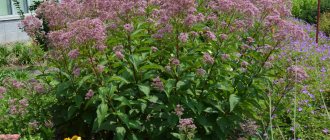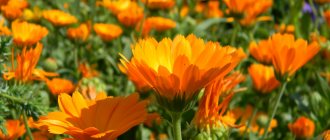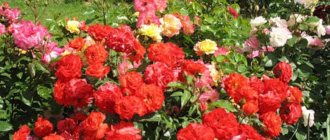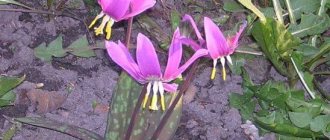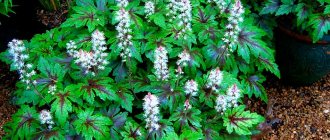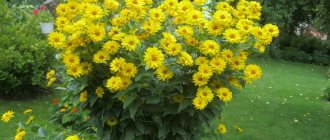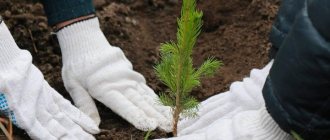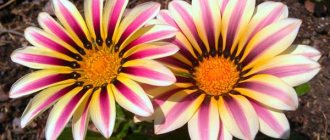Briefly about hydrangea. Climate in Siberia.
Siberia itself is one of the harshest places in Russia. The climate here is generally quite cold. The warmth lasts only three months a year, it is very often cold and damp, and the Russian winter is often famous for its severe frosts, which sometimes reach 50 degrees. Autumn and spring pass very quickly in Siberia, and their warmth does not last long; the only outlet when you can bask in the sun is summer. But it's quite short. It is the climate that greatly affects the cultivation of flowers and other plants in Siberia. But hydrangea is capable of growing even in such conditions. Despite its origin, gardeners grow it even in such harsh conditions. Some grow it at home in pots, and some successfully do it even in open ground.
Suitable species
Only some types of hydrangea can tolerate cold Siberian conditions, namely paniculate and tree-like ones. When choosing the right variety, it is very important to pay attention to its characteristics, especially the height of the bush, pay attention to the size of its inflorescences, as well as the flowering period. For northern regions, it is recommended to purchase early-blooming varieties of hydrangeas, since you simply won’t be able to admire the beauty of late blooms due to the onset of too early cold weather.
Paniculate hydrangeas have fairly large inflorescences that resemble a cone in shape. Whether you can admire the blooming of lush hydrangea or not depends on the correct choice of the required variety.
Today there are about thirty types of hydrangeas, most of which are simply unable to withstand severe frosts, which is why young plants should only be purchased from trusted gardeners.
Hydrangea varieties suitable for Siberia.
Naturally, for such cultivation you need to carefully choose the variety that you want to grow. At the moment, there are 40 different varieties of hydrangea, and this is not the limit, there are more of them every year. But in the conditions of Siberia, many of them are simply impossible to grow. But there are also varieties that can easily tolerate Siberian frosts and if you care for them properly, they will delight you with full flowering. The best frost-resistant varieties for Siberia are: Silver Dollar - this variety initially produces large, white flowers, which turn pink over time. This variety, like all hydrangeas, blooms for a very long time, and there are always a lot of flowers on the bush. This variety differs from the others in that it easily grows to a height of almost three meters.
Phantom - this hydrangea variety has almost the largest flowers of all. It easily grows up to two meters in height, and its flowers gradually change color throughout the season.
Pinky Winky - this hydrangea looks very original due to the fact that it has two colors on its bushes at the same time. They are darker below and almost white above. Such bushes grow 2.5 meters in height.
Vanille Fraise – this variety is capable of radically changing its color throughout the season. And it easily grows up to two meters in height.
Lime Light - this variety, like many others, gradually changes its color, but unlike the others, which change from light to darker, this variety initially has green flowers and gradually they become white. It easily reaches 2.5 meters in height.
Strong Annabelle - this variety grows fairly compact bushes, only 1.5 meters high, and with a beautiful round shape.
Candiflora - this shrub reaches a height of two meters and grows a very lush crown. It blooms for a long time, just like all other varieties. But the color of the flowers of this variety is quite unusual for hydrangeas, sandy.
Annabelle - this variety is almost the most frost-resistant of all. It has many advantages for growing in Siberia. Its bushes grow very quickly and bloom in very large inflorescences.
Invincibelle - this variety is just as good for Siberia as the previous one. It tolerates almost any frost very well, its shoots are very long, and its inflorescences bloom almost until severe frosts.
All these varieties are excellent for growing in Siberia. They feel very good even in the harshest climates, but they, just like other varieties, need proper care, because the bushes must develop correctly. Absolutely any types and varieties of hydrangea need proper and special care. Although it is not at all whimsical in growing, the gardener is simply obliged to pay attention to it, naturally, if you want to get a well-developed plant that will bloom profusely throughout the entire prescribed period.
Varieties
Tree-like and paniculate species are more resistant to frost and can more easily endure long periods of winter.
Winter-hardy
The main representatives of this species, which are considered the most winter-hardy, are varieties such as Silver Dollar and Pinky Winky:
- The first variety has large inflorescences, tall shoots reaching 3 m, and a delicate pink color of cone-shaped brushes. The bush is quite developed, has both green and brown branches. The leaves are oval, toothed, green.
- Pinky Winky has the ability to change the color of the inflorescences towards the end of the growing season. From white, the flowers gradually turn red and purple. In the southern regions of this climate zone, they are grown in open ground, leaving them in open ground for the winter. In the northern parts they are dug up so that they survive this period in special containers, and in the spring they are returned to their place.
Tree-like
These shrubs change the color of the inflorescences from white to green. The main varieties grown in Siberia are:
- Annabelle is a beautiful variety bred in America, has large inflorescences and a medium-sized bush with a spreading shape, and can withstand temperatures down to -25°C.
- Strong Annabelle has neat, compact bushes with green leaves, and can withstand down to -35°C, and is distinguished by a special shape of balls that are shaped like a hat.
- Invisible Spirit - considered the most suitable variety for this strip, it loves deep pruning of shoots and has lush crimson inflorescences.
- Grandiflora is a large plant with large creamy pink inflorescences that tolerates winter well.
Paniculate varieties
This species has fewer shoots, but more flower stalks. It tends to gradually change color to a pink tint.
Main varieties:
- Sandai Fresh is a strong, compact plant that bears large inflorescences, colored in light pink shades, changing to crimson.
- Limelight is a tall, not particularly wide bush with large lemon-colored inflorescences, which requires mandatory formative pruning and shelter for the winter.
- Vanilla Fresh is a unique cone-shaped inflorescence with a “chameleon” color, which changes from white to crimson.
- Unique is a tall plant with large white inflorescences hanging down.
- Medzhikal Fire is tall, not spreading, the inflorescences are bright scarlet, frost-resistant.
large-leaved
They are characterized by late flowering. The main varieties grown in this climate zone include:
- Schloss Wackerbart is a unique plant, the inflorescences of which can be painted in different shades, and does not tolerate frost well.
- Hovaria - Hydrangea with purple flowers that requires replanting in storage containers for the winter.
- You and Me Together is a variety that changes color depending on the acidity of the soil, and also requires storage in special containers in winter.
- Endless Summer is a bush with blue flowers and the hardiest of this species.
It is quite possible to grow Hydrangea in Siberia. It is enough to adhere to the basic rules of growing, caring for and covering for the winter. It is equally important to ensure the correct soil composition and location. The plant requires care and then, even after the harshest Siberian winters, it will delight with its beautiful appearance.
How to choose the right seedling.
Initially, the gardener faces a very important task: choosing the right seedling for planting. First of all, you need to pay attention to the soil in which the hydrangea grows. There must be a lump of earth on the root system of the seedling, which must be moist and uniform. Also, the shoots of the plant must be of sufficient length, healthy, without damage and always flexible.
It is best to buy a seedling just before planting. Of course, it is best not to store the seedlings, but if for some reason it is not possible to plant them immediately, then it is imperative to comply with the conditions for storing the seedlings before planting: the earthen ball on the roots should always be moist and located in a dry and well-ventilated place.
Selection of seedlings and propagation
When purchasing planting material, keep in mind that the bush gains strength, becomes resistant to cold and blooms profusely only at the age of 4-5 years. In order for a hydrangea seedling to quickly take root and winter well, it is advisable to purchase it from a nursery located in your climate zone. It is also possible to grow hydrangea with seeds, but in this case you will have to wait several years for the first flowers, and the varietal characteristics may be lost.
If there is a bush on the site, propagation of hydrangea can be done independently from cuttings, by digging in a strong shoot or by dividing the plant. Experienced gardeners advise using cuttings, which preserve the decorative characteristics of the shrub. Rooting cuttings is done as follows:
- Early in the morning shoots with strong buds are cut off. Cutting is done in the morning so that the shoots retain the moisture necessary for the survival of the plant. We place the branches in water; further work should be done quickly.
- The shoot is cut into several parts with 2-3 pairs of leaves on each. The upper part with the future flower is not suitable and should be thrown away.
- Leave each cutting in the root stimulator solution for 2 hours. Cut off the bottom pair of leaves and shorten the top pair by half.
- The prepared cuttings are planted in pots, the soil for planting is taken at the rate of 1 part sand to 2 parts peat. The soil must be moistened and future seedlings watered twice a week. For better adaptation and rooting, cover the sprouts with jars.
The cuttings take root a month after planting, this can be seen by the growth of new leaves from the buds.
When and where to plant it.
Of course, you can plant hydrangea, just like other plants, both in spring and autumn. But with regards to Siberia specifically, it is better to do this in the spring. This is done so that the seedling can take root well over the summer and get used to the new place where it will have to grow for many years. During this time, the seedling will also have time to grow and survive the winter well. It is in Siberia that when planting a plant in the autumn, there is a high probability of losing it, because it can simply freeze.
Likewise, in the spring, hydrangea can be planted only when the frosts have completely stopped, and there will definitely not be any repeat frosts. This mainly happens in the second half of May. This is all necessary because, although hydrangea is frost-resistant, it can hardly tolerate temperature fluctuations, especially when it is young or has just been planted.
Regardless of the variety or type, any hydrangea loves acidic soils most. If it is not acidic enough in your area, then special fertilizers are applied twice a year to correct the situation. This should be done in early spring, before the hydrangea blooms. And in the fall, when preparations for winter begin. It is the composition of the soil that plays a very important, and almost the main role in growing hydrangea. After all, if the soil on your site is not suitable for it, then it simply will not develop properly, much less bloom.
The correct choice of location also plays a very important role in planting shrubs. Since hydrangea does not really like transplanting, the choice of location must be taken with full responsibility. Hydrangea loves light and warmth very much, so the area in which it will grow should be well illuminated by sunlight, only these should not be direct rays, but slightly diffused ones. Although this shrub can easily adapt to almost any conditions, so if it grows a little in the shade, this will not affect flowering in any way.
Basically, hydrangea is planted as a separate plant. it is rarely planted in a flower arrangement. And all because the bush is very large and all other plants will very quickly get lost against its background. Hydrangea is often planted as a hedge, and it is also very often used in landscape design.
After you have chosen the place where the hydrangea will grow in the future, the first thing you need to do is prepare a hole for planting. It must be at least half a meter in both length and height. this size is simply necessary so that the root system develops well and has enough space. Before lowering the seedling into the hole, you first need to add special fertilizers to it, or simply mix organic matter with minerals. Also, the soil mixture must contain sand, thanks to it the soil will be lighter and looser.
Before lowering the seedling into the hole, its roots must be shortened a little with a sharp tool. And it’s best to trim the shoots a little. Hydrangea seedlings should not be planted too deep. The root collar should be almost on the surface of the earth. After you have lowered the plant into the center of the planting hole, you need to carefully cover it with earth and then compact it well. And after you do this, the newly planted plant must be watered with warm water. After all this, it is best to mulch the ground under and around the bush, and peat is best suited for this purpose.
general information
Basically, the species diversity of the plant is more represented in the form of shrubs and small trees, and less in the form of vines. They are divided into evergreen varieties and deciduous. Siberia belongs to the 3-4th climatic zone, which is characterized by the following conditions:
- Spring is late and short.
- Summer is humid, which is a big advantage for growing hydrangea in Siberia. Most types of hydrangea are moisture-loving and do not tolerate dry weather.
- Autumn is short, starting from mid-to-late August.
- Winter is long, 7-9 months.
For different climatic zones, you need to choose the right types of hydrangea for Siberia. Temperatures range throughout Siberia in winter from -20 to -60 °C, in summer from 2 to 20 °C.
For successful cultivation, abundant flowering and reproduction, you need to follow several rules:
- The soil is neutral or acidic.
- Moderate watering, Hydrángea is a moisture-loving flower. Lack of moisture reduces the quantity and quality of flowers.
- Fertilizers are added 3 times during spring and autumn: in spring - when buds open;
- during the formation of flowers;
- before sheltering for the winter;
Advice! Seeds of some varieties may not have time to ripen in Siberian conditions, so it is better to propagate by cuttings or layering.
Proper care.
After the plant has been planted, it needs to be properly cared for. First of all, care includes watering. Since hydrangea is very moisture-loving, it needs to be watered often and in moderation.
Hydrangea also loves pruning. This event must be held at least twice a year. Moreover, this must be done correctly, because a lot depends on it. In spring, pruning should be done before the buds begin to bloom. But in the fall, pruning should be done before the first frosts begin.
When pruning you need to: trim old damaged and diseased branches, as well as weak shoots.
On all shoots this year you need to leave a few buds, the remaining length needs to be shortened.
If new shoots begin to form on the old ones, then they definitely need to be shortened, but this must be done so that three buds remain on them.
Since hydrangea bushes are very large, its flowers are large and heavy, capable of breaking not very strong branches. Therefore, they definitely need support and you definitely need to think about this in advance, even when you have just planted the seedling.
It is necessary to apply fertilizer to the bushes, but this must be done correctly and at the right time. After all, it is thanks to fertilizing that flowering will be intense, long and abundant. And the intensity of the color of hydrangea flowers depends precisely on the acidity of the soil, and for this you also need to apply fertilizer.
Both organic matter and special complex fertilizers are perfect for feeding hydrangeas.
There should be several feedings per season, but no more than four: the first should be done in early spring, before the bush begins to bloom. The bush needs a second feeding when the plant begins to bloom. The third feeding is carried out in mid-summer, at which time the bush is already blooming very profusely. And the last, fourth feeding is carried out when you begin to prepare the plant for winter.
Despite the fact that special frost-resistant varieties are chosen for Siberia, you still need to prepare very carefully for winter. After all, despite all the tricks of breeders, hydrangea is a heat-loving plant that can simply freeze out at any moment.
Although all the varieties already listed grow well in our climate, they still need some care and they still definitely need to be insulated for the winter. If it suddenly happens that the hydrangea freezes, it simply will not bloom, or there will be very few flowers and it will take a lot of time to recover. In order to insulate the hydrangea so that it can withstand any frost, special measures need to be taken. Firstly, during the autumn preparation for winter, the shrub needs to be hilled up to a height of at least 30 cm. The hydrangea shoots need to be bent to the ground, but it is best to place them not on the ground itself, but on some kind of material. After you cover the hydrangea bushes, you must make sure that no moisture gets under the covering material. And in the form of covering material it is well suited: hay, sawdust, pine needles, etc. Naturally, this material must also be completely dry. Also remember that a young plant needs to be covered more tightly. This is because the older the plant, the easier it is for it to withstand severe frosts.
Caring for hydrangea in the garden
How well the plant will take root depends on further careful care.
Watering and loosening
Hydrangea is very moisture-loving; the soil should never be allowed to dry out; the soil under the plants should always be moist. Watering is carried out once a week, spending about 20–25 liters on one adult bush. During the hot period, water more often (2-3 times a week), in the morning or evening hours, when the heat subsides. Use soft, settled or rainwater.
Weeds are pulled out, the top layer of soil is loosened to a depth of 2–3 cm. To retain moisture, the mulch is regularly updated (at least three times per season).
Hydrangea needs to be watered well
Experienced gardeners periodically water hydrangea bushes with a weak pink solution of potassium permanganate to prevent the appearance of rot.
Feeding
For the first two years after planting, hydrangea does not need additional feeding (if the planting hole has been filled correctly) . Subsequently, the bush is fertilized 4 times during the growing season (per 1 bush):
- In early spring, at the beginning of the growing season: superphosphate - 35–40 g;
- potassium sulfate - 30–35 g;
- carbamide (urea) - 25–30 g.
- potassium sulfate - 45–50 g;
- potassium sulfate - 10–15 g;
It is better to combine fertilizing with watering; for this, dry granules are first dissolved in a bucket of water . You can find specialized complex fertilizers for hydrangeas (Fertika, Rokon, etc.) on sale; they are used according to the instructions.
Agricola fertilizer contains basic nutrients (nitrogen, phosphorus and potassium), microelements in a special chelate form and humic biologically active substances - energens
If the hydrangea develops poorly, withers or blooms sparingly, then perhaps the soil in the area is alkaline, which this flower crop cannot tolerate at all. For acidification, use oxalic or citric acid (30 ml per 10 l), battery electrolyte (10 ml per 10 l) and other means.
Trimming
Hydrangea bushes begin to form after 3–4 years . The procedure is carried out early in the spring, before the sap begins to flow. At the same time, the desired shape is formed and the young growths of last season are shortened to 3–5 buds. Old, poorly flowering plants are radically rejuvenated by cutting out all the branches and leaving stumps 6–8 cm high (new shoots will come from them).
In the fall, sanitary pruning is carried out, during which faded inflorescences, dry, broken branches and branches growing inside the bush are removed.
Old flower stalks must be cut off
Transfer
In Siberia, hydrangeas need to be replanted very early in the spring, before the leaves bloom . Autumn transplantation is fraught with freezing. To injure the plant less, replanting should be carried out using the transshipment method, being careful not to injure the root system.
Preparing for winter
Hydrangea needs to be thoroughly prepared for wintering; this must be done before the first frost:
- The bushes are hilled by raking peat or compost under them in a layer of 25–30 cm.
- They tear off all the leaves except the top ones (if they have not fallen off on their own).
- The branches are carefully pulled together and tied with rope or twine.
- They wrap it in several layers of covering material, carefully pinning it to the ground or pressing it down with something heavy (boards, bricks, etc.).
- They throw spruce branches on top.
- After the snow falls, a snowdrift is thrown over it.
In the Siberian climate, hydrangeas must be wrapped for the winter.
A neighbor, who has a small hydrangea bush growing on her property, installs a special frame over it during the winter (these are sold in stores). And the plant itself is first covered almost to the very top with a pile of dry leaves from the birch tree growing behind the fence. At the end of November, when enough snow falls, but there are usually no severe frosts yet, she throws the frame on top to make a decent snowdrift.
Video: how to care for hydrangea in Siberia
Diseases and pests.
Hydrangeas, just like other plants, experience diseases. Although this is a fairly rare occurrence, it can still happen at absolutely any time.
Among hydrangeas there is a disease called chlorosis. It appears due to the fact that the plant grows for a very long time in the same place and does not receive proper fertilizer. Because of this disease, the leaves of the bush begin to turn yellow. If treatment is not started in time, the bush will gradually begin to weaken and eventually die. As a preventative measure, as well as treatment itself, medications that contain iron are suitable. Hydrangea is also often affected by diseases such as gray and white rot, powdery mildew, and septoria.
These are all fungal diseases that can live both on the leaves of a plant and simply in the ground. Initially, they may not show their existence in any way, but as soon as you make a mistake in caring for the bush, and it doesn’t matter which one, the disease can very quickly show itself in all its glory and the fungus will begin to develop very quickly and destroy your plant.
If you are affected by a disease, the sooner you start treatment, the easier it will be, and the less harm it will cause. First of all, at the early stage of the disease, spraying the bushes with special preparations helps. And those parts of the bush that were nevertheless affected must be removed from the bush and burned outside the site.
In addition to the fact that hydrangea has diseases, it can also be attacked by pests. This could be aphids, snails, spider mites, etc.
It is much easier to fight pests; when they first appear, the bushes need to be sprayed with special preparations, but if this is not done and the pests remain, they can destroy the plant, and it will simply die.
Soil preparation
It is worth digging a hole in the ground, which should correspond to the size of the root. The size of the hole directly depends on the size of the seedling. For small plants, a hole measuring 50*50 would be ideal. For a larger seedling, you need to increase the size to 80*80.
Before planting, you need to pour two or three buckets of water into the dug hole. It is not recommended to start planting immediately after this. It is necessary to leave the hole overnight, allowing the water to completely absorb into the soil.
Immediately before planting the seedling, the dug hole must be filled with a special composition, which consists of the following components:
- peat;
- fertile soil;
- sand;
- humus.
You can add a fertilizer mixture consisting of 25 g of urea, 65 g of superphosphate and 25 g of potassium sulfate.
Reproduction
As for propagating hydrangeas, there are several ways to do this: seeds, cuttings, layering and dividing the bush. But most gardeners choose cuttings. After all, it can be carried out at different times and it almost always gives a 100 percent result. Cuttings need to be cut only from young bushes; this determines how quickly they will take root. And it’s best to cut them off on the side shoots. Cuttings must have at least two buds, but no more than five. Cuttings of hydrangea are carried out in the same way as cuttings of absolutely all plants; there are no difficulties at all. Before planting, it is advisable to treat all cuttings with root growth stimulants, and only after that plant them in a pre-prepared mixture. You can plant several cuttings together in one container, the main thing is that their distance is at least 10 cm. It is best to plant rooted cuttings in open ground in the spring, this is done for the objective reasons stated above. If all care conditions are fully met, then you can easily grow a healthy, well-flowering plant that will always delight you.
Features of planting hydrangeas in the Siberian climate
For cultivation in Siberia, it is necessary to purchase seedlings of varieties zoned for local climatic conditions, grown here in Siberian nurseries. Plants older than 3-4 years take root best. Heat-loving tender hydrangea is planted only after the threat of return spring frosts has passed, that is, at the end of May or early June.
It is advisable to buy planting material immediately before planting. If this is not possible, then care must be taken to ensure that the earthen ball and, accordingly, the root system are always moist.
This ornamental shrub feels more comfortable and blooms more abundantly in a place protected from strong gusty winds (near a fence, the wall of a house, etc.), in bright, slightly diffused lighting . It is best if the plant is illuminated by sunlight in the first half of the day, and in the afternoon it is in partial shade, for example, large trees or shrubs. The soil should have weak or medium acidity; alkaline soil is destructive for hydrangea.
Hydrangeas do best in light partial shade, but can also grow in full sun.
Soil preparation
It is extremely important to properly fill the planting hole; the survival rate of the seedling greatly depends on this . Its size is determined by the dimensions of the planted bush:
- 50*50 cm - for small ones;
- 80*80 cm - for large ones.
If you plan to place several specimens, then leave at least 2–2.5 m between them. The depth of the hole varies from 40 to 60 cm depending on the size of the root system. A few hours before planting, the hole is filled with water (2-3 buckets), which should be completely absorbed. Then a special soil mixture is prepared from:
- fertile garden soil - 2 parts;
- humus or well-rotted compost - 1 part;
- lowland peat - 2 parts;
- coarse clean sand - 1 part.
Additionally, fertilizers are applied:
- urea - 20–25 g;
- superphosphate - 50–60 g;
- potassium sulfate - 25–30 g.
To acidify the earthen mixture, it is recommended to add pine or spruce needles to it.
All components are thoroughly mixed, and the resulting soil is filled approximately halfway into the planting hole.
The planting hole for hydrangea is filled with a special soil mixture.
Instructions for planting plants in open ground
Before planting, it is recommended to slightly shorten the too long roots of the seedling (if it does not have a closed root system) and trim the shoots (up to 5-6 buds). Then do this:
- The seedling is placed in the center of the planting hole, the roots are carefully straightened.
- The root collar should be flush with the soil level.
- Holding the stem, the hole is filled to the top with the remaining soil mixture.
- Compact the ground.
The soil is compacted well by hand
- Water well with settled, lukewarm water (not cold tap water or well water).
- Mulch with peat, pine needles, sawdust, etc.
Popular varieties
Today there are both tall, winter-hardy hydrangeas and low-growing representatives of this plant. Both varieties can germinate in Siberia, but it all depends on the variety. Let's consider the most popular varieties of paniculata hydrangea for Siberia and their description.
- Vanille Fraise. This variety is one of the brightest representatives of paniculate hydrangea, capable of surviving in cold conditions. It looks really luxurious. Vanille Fraise inflorescences can reach 30 centimeters in length. At the beginning of flowering, the petals are white, a little later they begin to gradually turn pink, and at the end of flowering they acquire a rich crimson hue. As a result, the lush bush has the color of the so-called strawberries and cream. It looks really amazing in landscape design. This variety can easily survive winter temperatures down to -30 degrees. It requires special care, because if the bush is neglected, a mass of damaged branches will form on it.
- Silver Dollar. The perennial flowering hydrangea of this variety will be especially loved by those who prefer lush inflorescences and spreading branches, which are very strong in this variety. The panicles with snow-white flowers are cone-shaped; by autumn they can take on a slightly pink tint. The inflorescences reach 25–30 cm. The leaves are bright emerald green with jagged edges. This variety has decent winter hardiness; Silver Dollar can easily tolerate temperatures of -25 degrees. For harsher climates, it is recommended to cover it properly.
Frost-resistant panicle hydrangea is also “Pinky Winky”. This variety is a deciduous shrub with abundant flowering. At first the flowers are white, then they turn pink and have an elongated shape. “Pinky Winky” can withstand temperatures from -25 to -30 degrees, and the older the bush gets, the more its frost resistance increases.
Tree hydrangeas are also grown in Siberian conditions; they are usually 2 or 3-meter shrubs with fairly strong shoots, with large inflorescences concentrated on them. Some of the most popular varieties are the following.
- Annabelle. “Annabelle” is a variety of densely growing tree-like hydrangea with dark green leaves and large white spherical inflorescences (at the beginning of flowering they may have a soft green tint). This variety grows very quickly, on average up to 20 cm per year. “Annabelle” is one of the most frost-resistant varieties, as it can withstand temperatures down to -40 degrees.
Paniculata hydrangea in landscape design
Thanks to the use of this plant - paniculata hydrangea - in landscape design, beauty and harmony are achieved in small and large spaces of land.
To give the area a wavy appearance, three or more bushes are planted: their spreading shape and airy flowering help create a feeling of joy and happiness for the inhabitants of the estate.
The composition of a mixborder of hydrangeas enlivens the severity of coniferous trees, giving tenderness and airiness to their static appearance with lush flowering.
Aftercare
After planting hydrangeas, they must be properly cared for, otherwise they will not live their allotted life. Growing the plant itself is not the most painstaking, and many varieties are so hardy that with proper care they can live for more than 30 years.
- Watering. Watering plants is extremely important. The soil should always be moist, but you should not overwater it. After each watering in harsh conditions, it is recommended to sprinkle the soil with dry leaves or sawdust. Mulching is extremely beneficial for garden hydrangeas, because it allows you to retain moisture in the soil without forming crusts on it. It is best to use water for irrigation at room temperature; many experts even recommend standing it for several days. Sometimes you can add a little manganese to the water, which is used for preventive purposes against a number of diseases, but you shouldn’t be overzealous here either.
- Feeding. In order for the bush to be strong and hardy, and its growth to be even more accelerated, it is recommended to feed it. Fertilizing also has a good effect on abundant flowering. Hydrangeas should be fed with special fertilizers no more than 4-5 times per season. From organic matter, you can use manure fertilizers or nitrogen compounds; mineral fertilizers are also recommended. You can feed the plant when the cold weather subsides, then when it begins to bud, during flowering, and finally after shedding its leaves.
- Trimming. Hydrangeas should be trimmed only when necessary; you should not get carried away, because this can cause serious damage to the plant. In the fall, dry branches with foliage are usually pruned, but in the spring it is recommended to do more thorough pruning. Branches can be shortened to five buds, in rare cases and if necessary more. On paniculate hydrangeas, shoots are removed up to the third bud; it is not advisable to cut off the main ones.
Is it possible to plant and care for paniculata hydrangea in Siberia? The exotic, lush appearance of hydrangea often worries those who garden in Siberia: they doubt that it will be able to adapt to harsh climatic conditions. However, there is an increase in the popularity of hydrangea paniculata in the design of dachas, gardens, and personal plots in the Kemerovo, Omsk, Tomsk regions, Krasnoyarsk Territory and Altai.
Hydrangea paniculata is unpretentious: planting and care are not difficult even for novice gardeners. Being a decoration of any estate, a profusely flowering one and a half meter shrub with cone-shaped and spherical and pyramidal inflorescences reaching thirty centimeters looks self-sufficient and solemn.
The origin of hydrangea is the Far East, China and Japan: growing in humid climates, some species of wild plants are half the size of modern hybrids adapted to Siberia, and some reach the size of a ten-meter tree, the trunks of which are valued for their white, durable wood used in creativity.
Description of popular varieties
Thanks to technology, the shades that change during the period of prolonged flowering have become more diverse; paniculate hydrangea already has dozens of species.
Hydrangea "Silver Dollar"
Perennial hydrangea paniculata “Silver Dollar” captivates with its cone-shaped shape, greenish tint at the base, yellow inflorescences turning into sterile white;
in autumn it can acquire pink and lilac shades. Starting in July, "Silver" finishes blooming in September. Hydrangea “Silver Dollar” is the leader among its representatives: spreading, reaching two meters in height and width, unpretentious to heat, shade and soil: it grows on loamy, slightly acidic soils and black soil. Due to the instantly depleted reserves of nutrients and moisture, it does not tolerate sand and begins to wither.
Care, pruning
Care without sufficient watering is disastrous: after fertilizing, as well as at the time of formation of buds, regular watering must be carried out. To retain moisture in the root zone, the plant is mulched.
“Silver dollar” is as resistant to pests as possible.
Advantages of an unpretentious plant:
- straight growing shoots;
- cultivation in a container is possible;
- no garter required;
- flowers on almost every branch.
Trimming
With the help of timely pruning, the bush is given a shape that is appropriate for the landscape designer’s plan.
Pruning rules for caring for paniculata hydrangea:
- Hydrangea paniculata is pruned before the period of peak sap flow. If the moment is missed, then pruning is carried out after the leaves begin to bloom.
- Thanks to proper pruning (trimming last year's shoots shorter), lush flower stalks are achieved.
